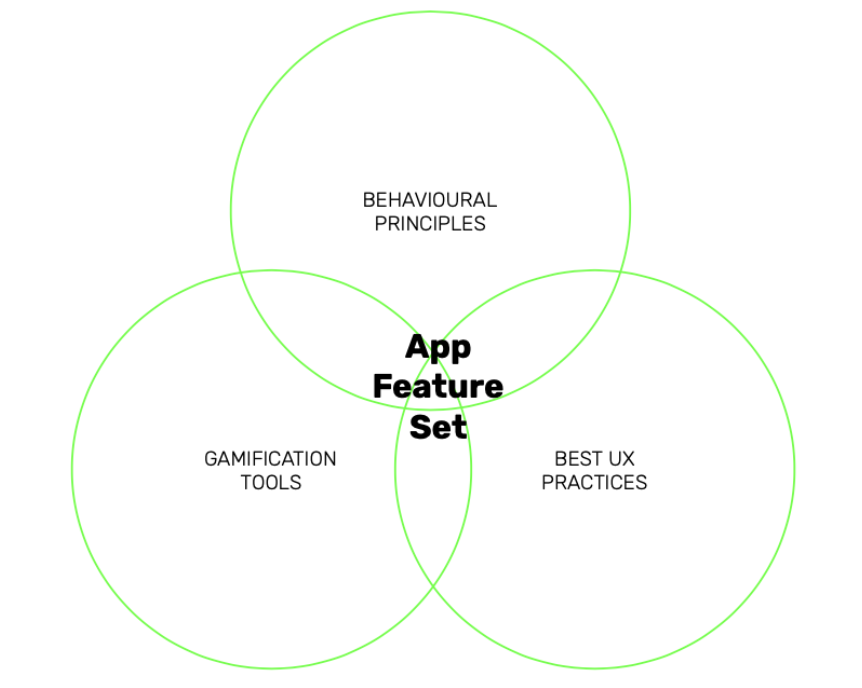August 24, 2021 - 3 min
Behaviour and Gamification Principles as Tools for Digital Product Success

While some projects start with clients’ ideas only, others are more defined, with specific expectations and main features. If the client has only an idea about the project, we usually conduct user research. That is the best way to get solid foundations for further feature ideation. In the case of more defined projects, we go for ideas research.
Ideas research is a phase of the Product Strategy that is tailor-made for each project’s needs and client expectations. It involves understanding the main product goals and connecting them to behavioral principles and good UX practices to create digital products that will enhance business goals.
This blog will give you insights into this phase through one of our recent projects.
Ideas research is a phase of the Product Strategy that is tailor-made for each project’s needs and client expectations. It involves getting into a deep understanding of the main product goals and connecting those to behavioral principles and good UX practices.
One of the clients came to us with a request to help them with developing an app for learning. Their goal was to create an app that is number one in the market by allowing dierent ways of knowledge sharing. It was an exciting project that needed a deep understanding of learning mechanisms, especially user motivation and engagement.
The client also imagined this app to be playful and fun to use – this is where gamification tools were helpful. The main goal for Ideas research in this project was to dierentiate this app from other similar apps in the market with features enriched with user psychology.
The approach we took is divided into three steps:

When those fields are merged, we can fully understand ideas that will keep users motivated and engaged for a longer time.
Best UX practices
To deeply understand the common practices of similar apps, how learning processes are built, and which principles we could use as best-case examples in the ideation of the feature set for our app, we conducted competitors research.
Analysis was done into three competitor layers: primary (other driving-learning apps), secondary (learning apps in general), and tertiary (apps with sound behavioral and gamification principles). Some of the apps we looked into are Headspace, Elevate, DuoLingo, and many others.
Behavior and users
Behavioral science insights take scientifically-backed research into how people process information, think about their social worlds, and make decisions, applying this wisdom to digital products.
During our analysis of the behavioral principles in existing apps, we found the eight most essential principles to boost the digital learning process. Together with best UX practices, these rules helped us set the ideation in the right direction.

Don’t play games with gamification
After understanding the behavioral principles, we looked into how we can enable these principles playfully and engagingly. This is where gamification tools came into play.
We all play games without being forced to do so. However, games – including video games, gamified apps, and gamified onboarding for financial products – help us discover to recognize patterns, stimulate us to develop strategies, and make the right decisions.
The essential feedback loop leads to self-reflection and learning. We concluded that gamification has the same powerful eect on human behavior as nudging, and it can improve eiciency and create value when done right.
It is essential to emphasize that gamification is not about creating game elements but applying game tools to solve real-life problems in non-game situations.
To ideate around the best gamification tools and behavioral principles, we used the Octalysis gamification framework. Yu-kai Chau has created this framework, and the premise of it is that, instead of starting gamification o with “game elements” and “game tools,” one should always start with how she wants her users to “feel.”

By connecting these three research areas, we created fertile ground for ideation that led us to feature sets grounded in users’ motivation and learning. We wanted to create a learning app that motivates, rather than pushes users to learn, playful, rather than monotonous.

At Q, we approach every project based on a detailed analysis of the project’s needs, the client’s expectations, and success with the user.
Some projects start with talking to the users, some with talking to the client, and some with understanding users behaviour. But the goal is always the same – to create valuable digital products.
Give Kudos by sharing the post!






